Halloween in Alsace? I might as well tell you right now, the parties and animations organised in the region are not on par with the Christmas festivities. For some, it’s a party for young people where they can have fun and be scared. For others, it is commercial and artificial infamy that has no place in the popular regional traditions. Between you and me, Alsace has no use for Halloween. Indeed, for centuries, the region has collected its share of creepy and sinister stories. Legends that have lasted since the dawn of time. So, if you want to bathe in the mysterious atmosphere in Alsace, look no further. I give you 5 legendary places whose stories – I hope – will not keep you awake tonight…
[lwptoc]
Halloween in Alsace: 5 legendary places
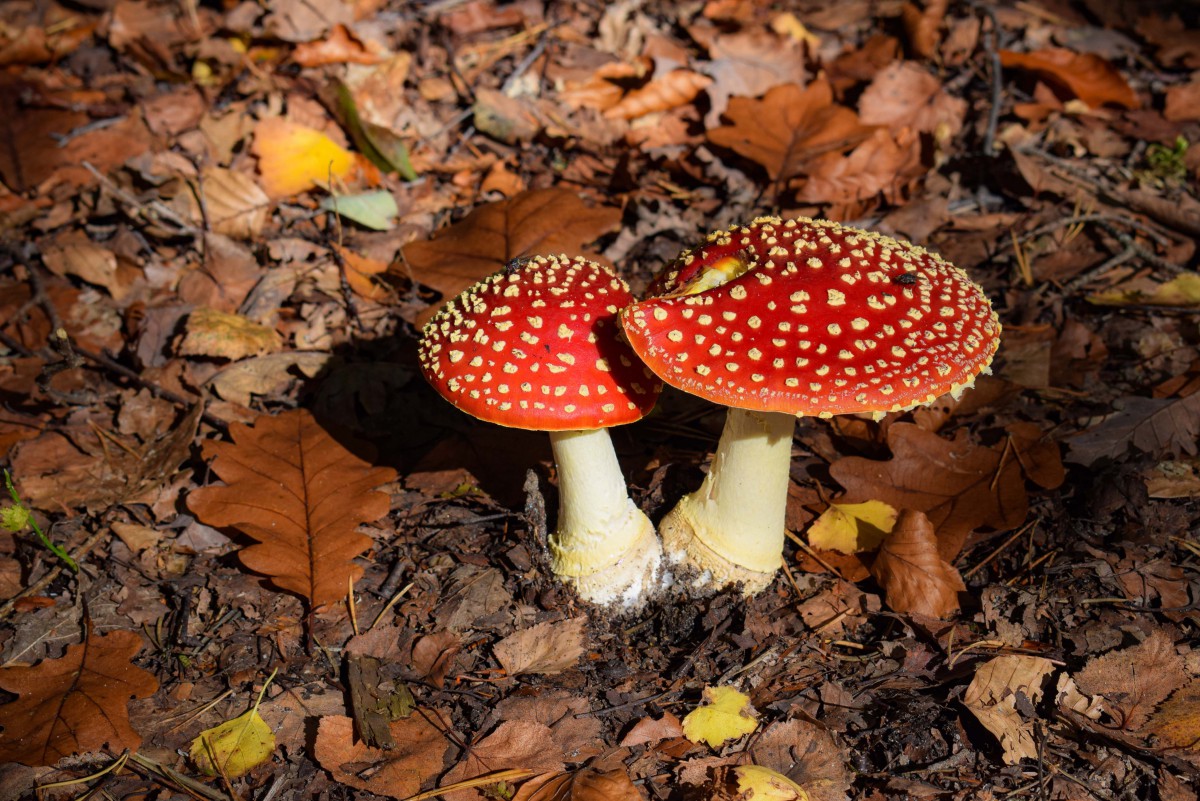
Exit Halloween. Here in Alsace, we have enough legendary places and scary stories to do without. Let’s take a little tour of the region, from South to North! The opportunity to discover some beautiful places in Alsace…
1. Mysterious parricide at the castle of Ferrette!
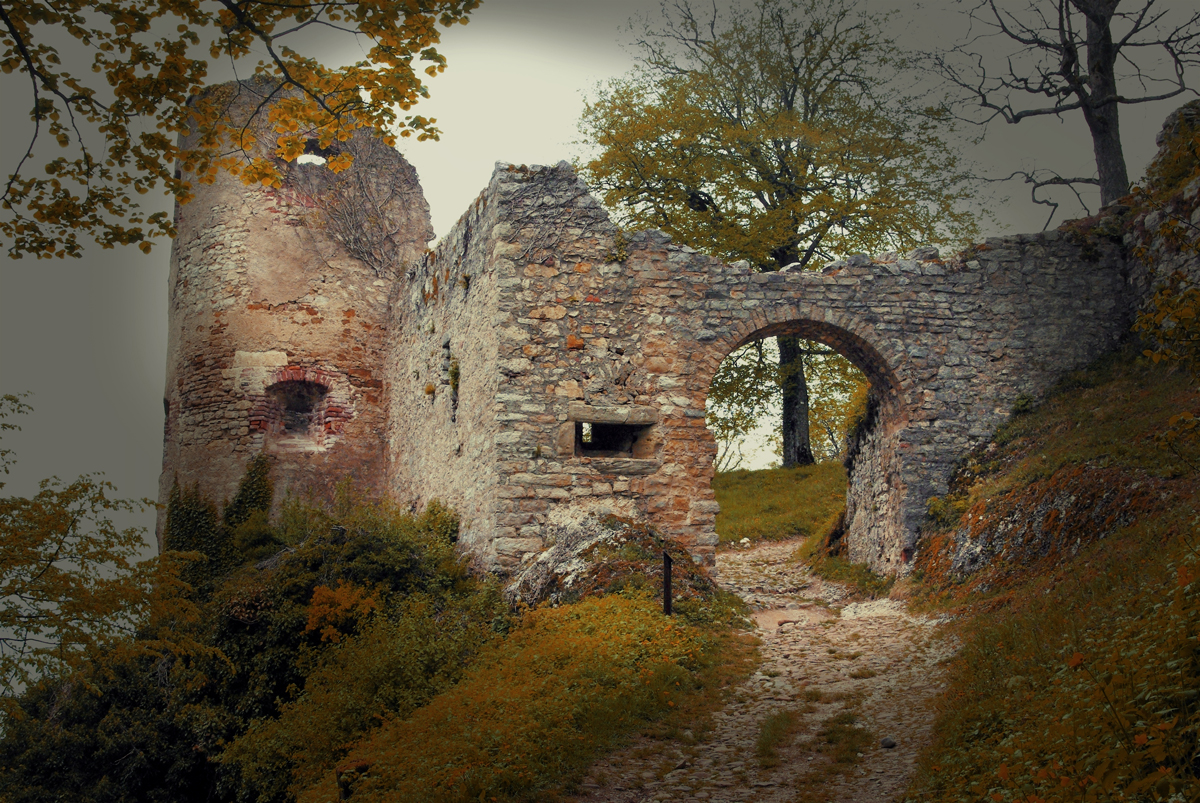
A dark family story has been haunting the ruins of the castle of Ferrette for more than seven centuries…
Let’s set the scene. Ferrette Castle, early 13th century. The master of the place? Frederick II, Count of Ferrette. Father of two children, Louis and Ulrich.
Frederick had the reputation of an unscrupulous man, with a violent and proud character.
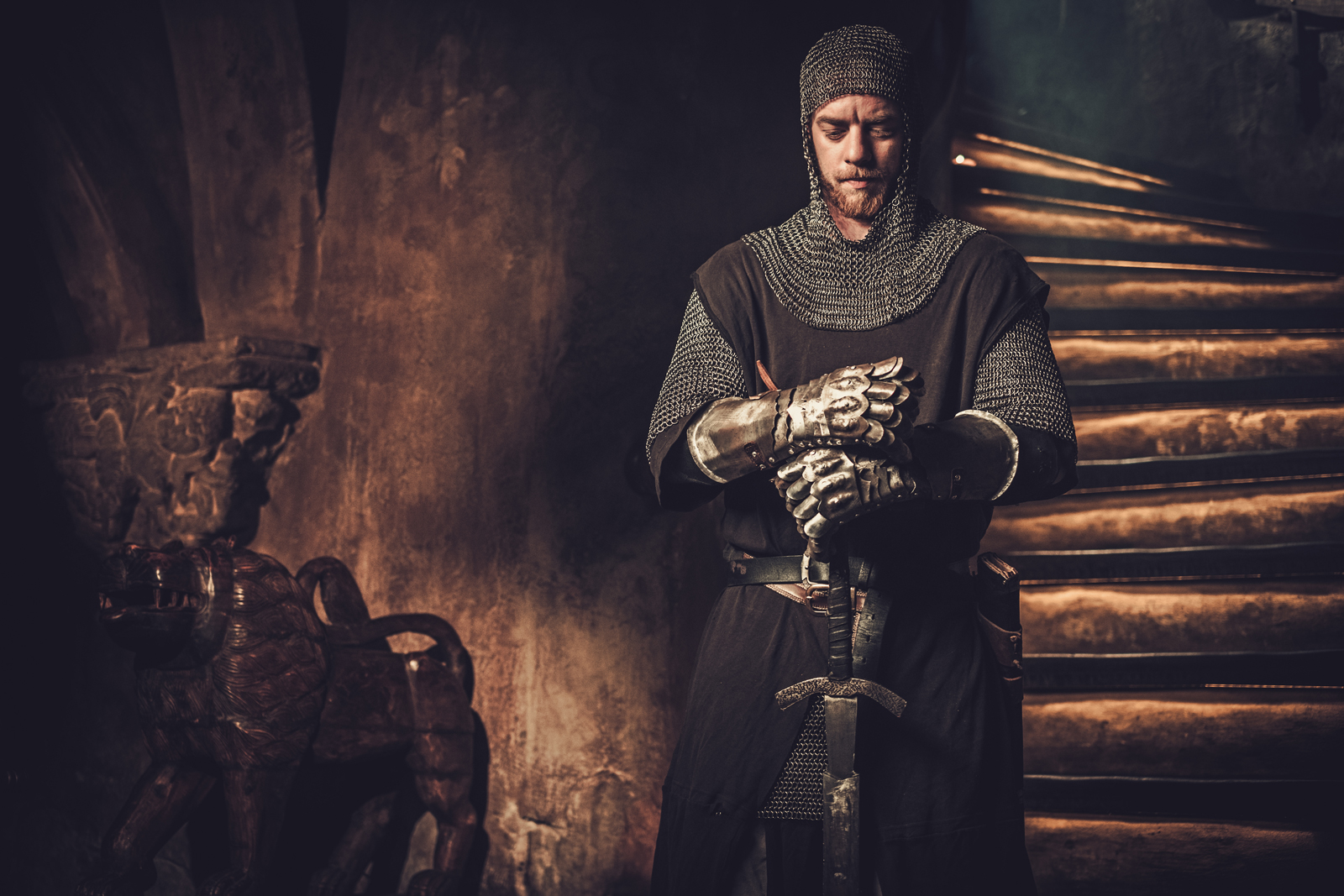
Not content with fighting against his neighbours, the Count of Montbéliard and the powerful abbot of Murbach, he kidnapped the bishop of Basel, Henry of Thun, and imprisoned him in Altkirch.

The humiliation of Harnescar
Once freed, the bishop did not delay taking revenge on the count. He ordered him (and the inhabitants of Altkirch) to undergo the punishment of the Harnescar. Behind this strange name lies a public humiliation. It consisted in carrying a dog on one’s shoulders along a route through the streets of Basel. The outrageous procession reached the Basel cathedral, where the victims humbly asked the bishop for forgiveness.
This offence did not please his eldest son, Louis. He was called Grimmel, the Fierce. It was promising…
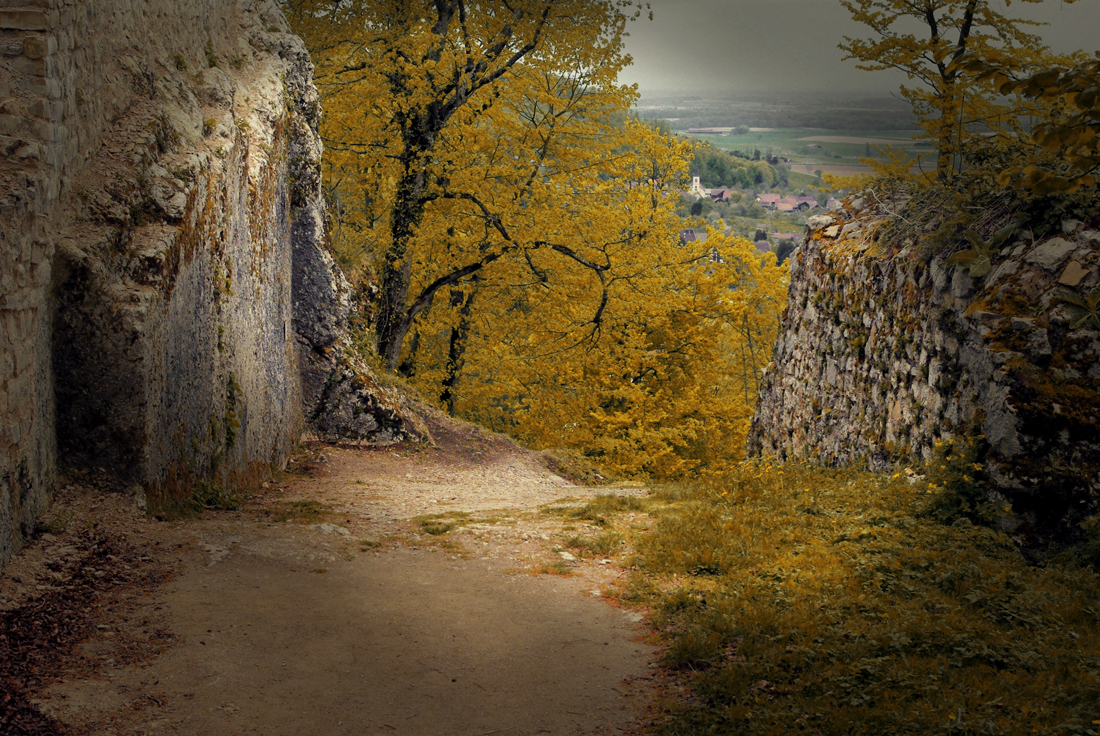
Murder in the castle
Louis the Fierce refused to participate in the Harnescar. He was on bad terms with his father.

Shortly after the unbearable procession in Basel, Frederick II was found mysteriously strangled and stabbed with a dagger in his castle in Ferrette. Public rumour was quick to point out the culprit. It could only be his eldest son, Louis the Fierce.
Yes, yes, like in an Agatha Christie thriller!
The eldest son was immediately excommunicated and banished, while his brother Ulrich took possession of the county. The latter continued to reign for 40 years after the fact under the name of Ulrich II.
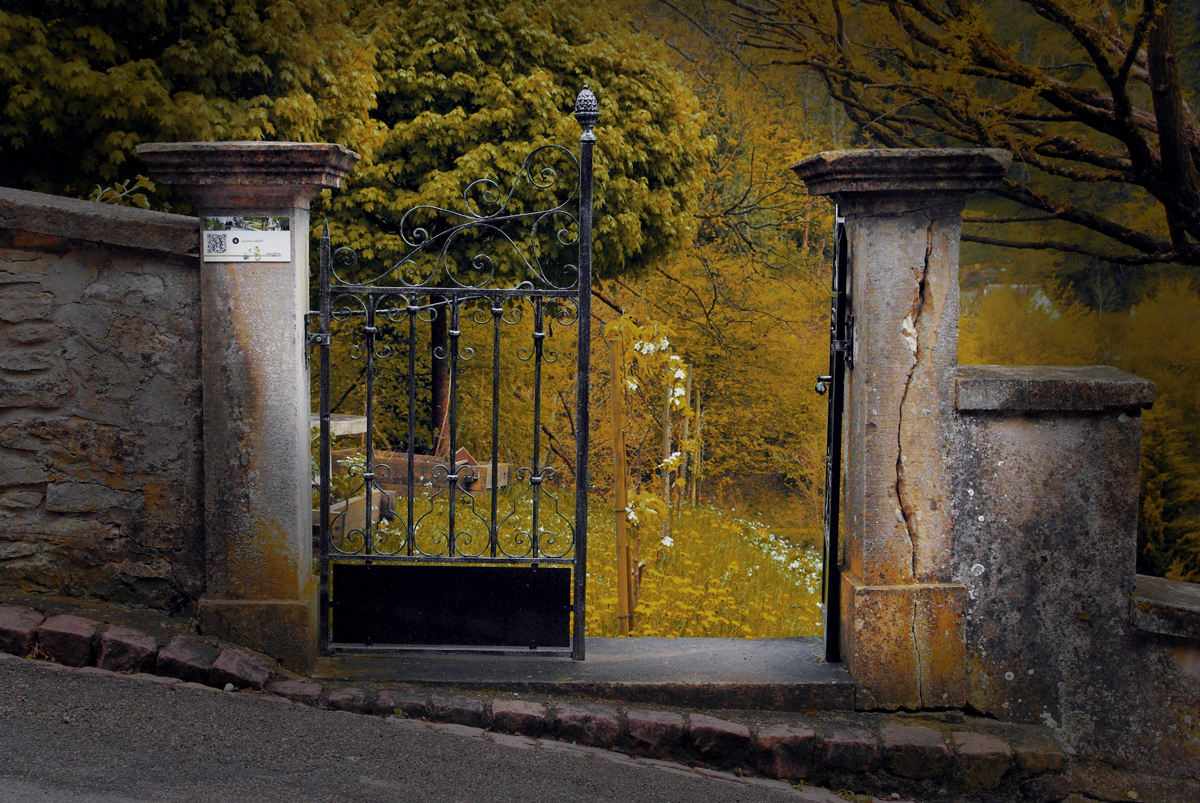
The confession that changed everything!
It was only 600 years later, in 1852, that the historian Auguste Quiquerez discovered a deed kept in the abbey of Lucelle.
His discovery could have made the front page of the 8 o’clock news!
The precious document recounted Ulrich’s confessions on his deathbed. By invoking God’s forgiveness, he declared that he was the real murderer of his father.
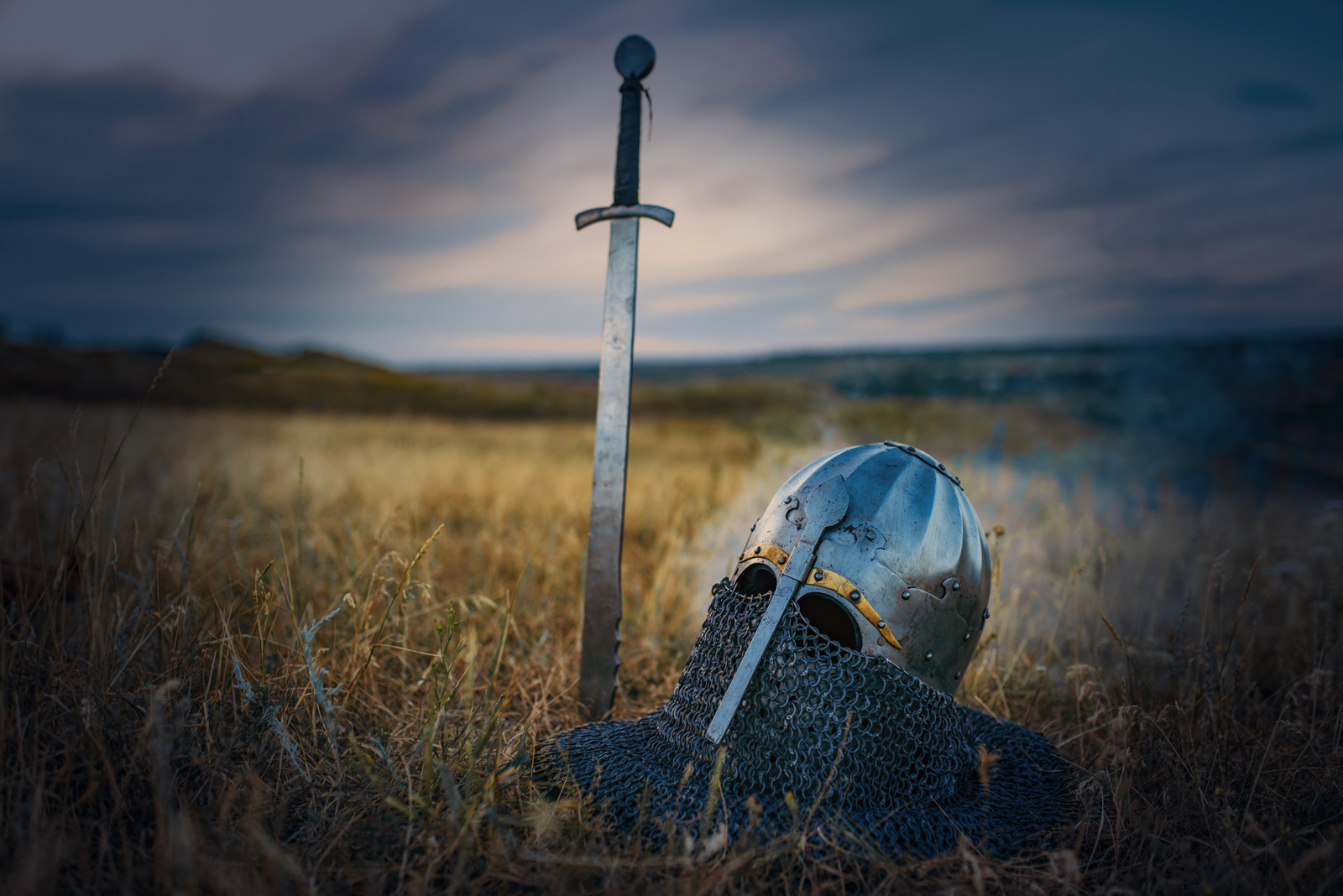
The deception discovered: the mystery remains
But at the dawn of the 21st century, a thunderclap!
The historian Christian Wilsdorf made a sensational announcement. Quiquerez had fabricated the confession by which Ulrich II accused himself of the murder of his father! What audacity…
Thus, we will never know who killed Count Frederick II in the gloomy darkness of a tragic night in the year 1232…
Visit Ferrette
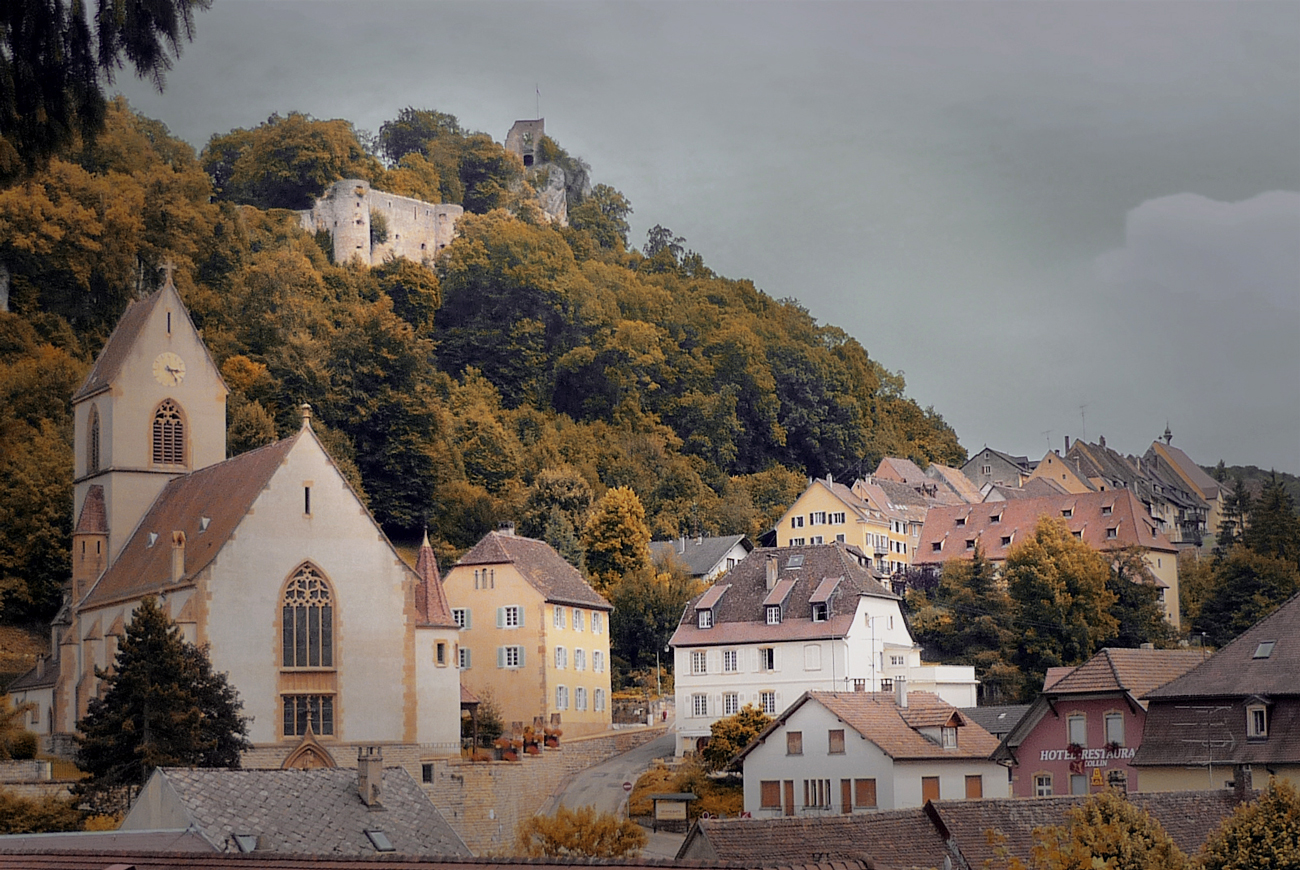
The small town of Ferrette is the former capital of the counts of Ferrette.
The town is dominated by the imposing ruins of its two castles.
You may have heard about it in 2015 in the France 2 show “Le village préféré des Français” (the favourite village of the French). Ferrette – then unknown to the general public – came in 6th place.
After strolling through the old sloping streets, climb up to the panoramic terrace of the castle. There is a splendid view of the roofs of the city, the mountains of the Alsatian Jura, the Sundgau, the Vosges and the Black Forest.
The discovery continues with beautiful walks in the Alsatian Jura (castles of Morimont, Landskron, Lucelle, sources of the Ill River in Winkel…).
To discover on the blog:
- the history of the Sundgau
- the castle of Ferrette [in French]
- the fascinating history of the county of Ferrette [in French]
- the small medieval city of Ferrette [in French]
The website of the Tourist Office to know more about Ferrette:
Book your accommodation in Ferrette!
- Click here for a selection of hotels, B&B and guest houses in Ferrette and its surroundings.
2. The eye of the witch watches over Thann!
How many motorists crossing the Bussang pass between Luxembourg and Basel know that in Thann, they pass under the Eye of the Witch?
Does a witch live up there, on the mountain of Schlossberg? Overlooking the city of Thann and its surroundings, she would spy through the ruins of the castle the comings and goings of the inhabitants. A sort of female Sauron from the Lord of the Rings!
Brrrr. It is enough to make you feel cold in the back.
And yet, there is nothing very mystical in all this. Let’s relate the facts.
A strategic road at the origin
The small town of Thann is located where the Thur valley meets the plain of Alsace. It is crossed by the N66 road which links Lorraine to Alsace. This strategic axis was used since ancient times. In the Middle Ages, the road connected Upper Alsace to the Duchy of Lorraine. And more globally, Flanders to Italy through the Saint-Gotthard pass.
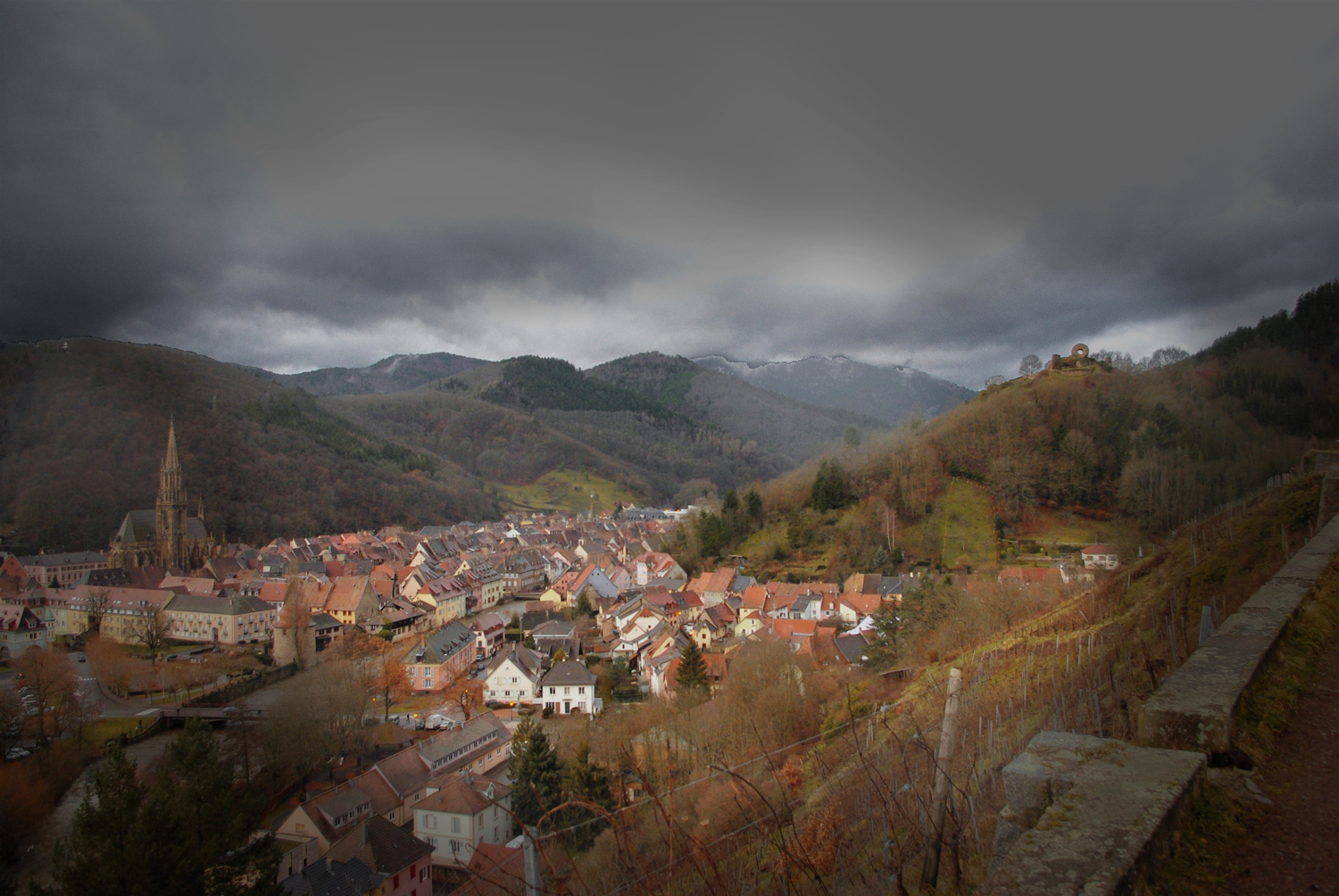
This is how the Count of Ferrette came up with the idea of building a fortress to control the “Thann lock”. It was given the graceful name of “Castle of the Angels” (Engelburg in old German or Engelbourg). What a nice name for a place that was mainly used as a tollbooth!
The castle of Thann was mentioned for the first time in 1234 on the occasion of the assassination of Count Frederick II. The eldest son, Louis the Fierce, was accused of having stabbed his father to death. His property was confiscated by the bishop of Basel, including the castle of Thann. Then in 1251, the bishop gave the castle back in fief to Ulrich II, Louis’ brother, who had become Count of Ferrette. He and his descendants made it their favourite residence.
The castle became Austrian!
In 1324, the heiress of the county of Ferrette married the Austrian duke, Albert II of Habsburg. The castle became Austrian. It remained so until the Thirty Years War (1618-1648). The European conflict was fatal to it. Between 1633 and 1639, Thann and its castle changed occupant no less than seven times.
Like the Sundgau, it was bequeathed to Cardinal Mazarin in 1658. The “Castle of the Angels” was in a sad state…
But above all, it was no longer of strategic interest. Since the signing of the Treaties of Westphalia (1648) giving Alsace to France, the borders of the kingdom had been pushed back from the Vosges to the Rhine.
Thus, in February 1673, Louis XIV ordered its dismantling.
The destruction that did not go as planned!
The intendant Mathias Poncet de la Rivière was entrusted with the work, which he carried out with the help of the miners of Giromagny (today in the Territoire-de-Belfort). It took several attempts to complete the work.
Finally, at the end of the third attempt, the large tower of the keep was raised. As it collapsed, a portion of the tower lay horizontally. The circular debris resembled an eye, hence the nickname it was given: l’Œil de la Sorcière, the witch’s eye.

The intriguing ruin of the Engelburg is accessible to the public today. To do so, you have to walk to the top of the Schlossberg from the town of Thann (about 30 minutes).
And what happened to the witch in all this?
If there was one, she must have been tortured in the Witches’ Tower. This vestige of the fortifications is bathed by the waters of the Thur. From the 15th to the 17th century, many witch trials took place in Thann and in the region. The present tower, recognizable by its bulbous roof, was built in 1411. Today it houses a museum.
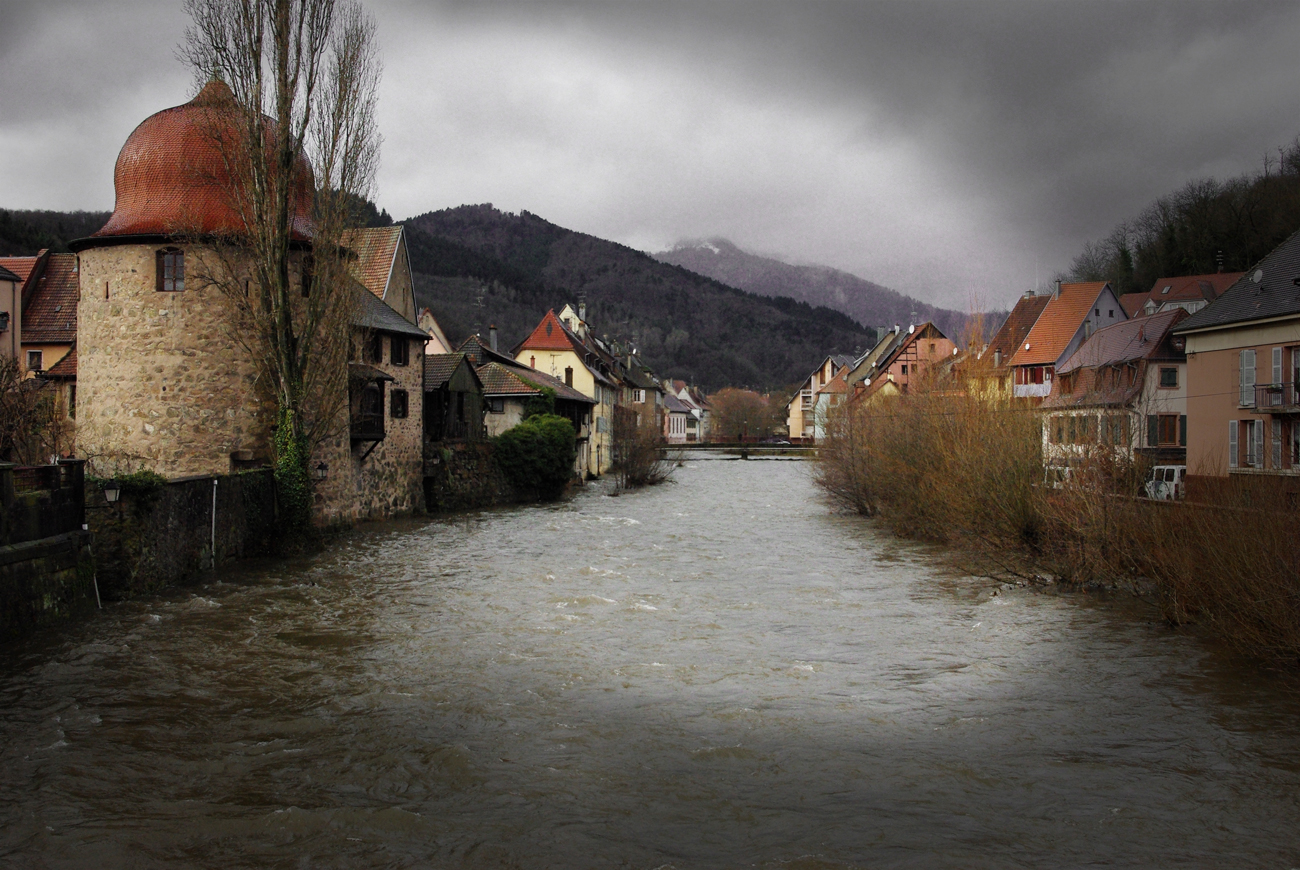
Visit Thann
The small city of Thann is proud of its beautiful collegiate church Saint-Thiébaut. Built in the middle of the 14th century, the church is one of the most beautiful Gothic buildings in the Upper Rhine region. Its bell tower is one of the most beautiful, together with those of the cathedrals in Strasbourg and Freiburg-im-Breisgau.
In the surroundings, don’t miss a walk on the slopes of the Rangen, one of the most famous vineyards of the Alsace Wine Route.
The website of the Tourist Office to know more about Thann:
Book your accommodation in Thann!
- Click here for a selection of hotels, B&B and guest houses in Thann, the southern gateway to the Alsace Wine Route.
3. The Sundgau: beware of spells!
Halloween in Alsace? Well, there are much more terrifying things than pumpkins and Jack-O’-Lanterns. Especially here in the Sundgau, in the south of Alsace.
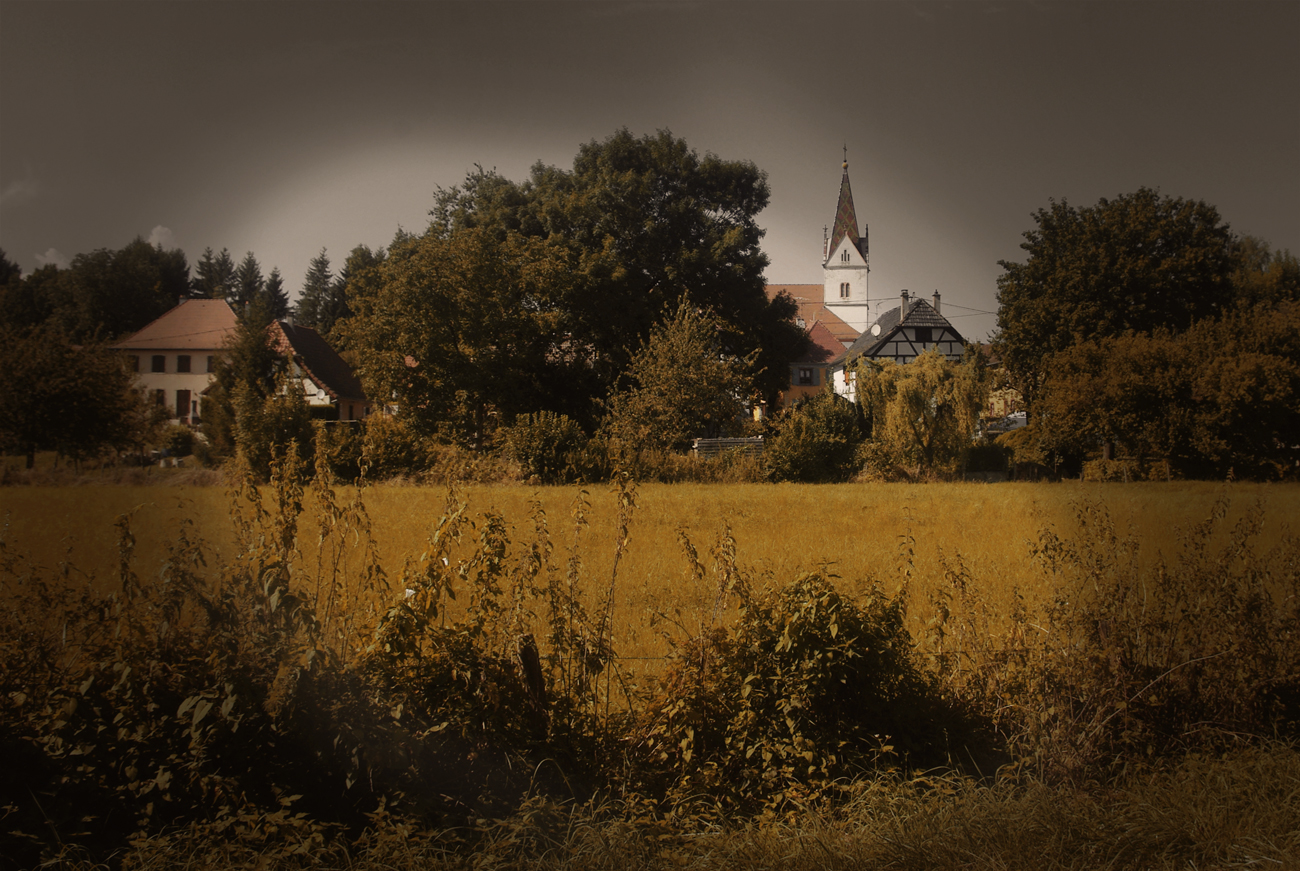
This picturesque and rural countryside of Southern Alsace has long been closed in on itself. This is despite the fact that it is bordered by major communication routes (Rhine-Rhone in particular) and large urban areas (Basel, Mulhouse and Belfort-Montbéliard). Rather paradoxical, isn’t it?
Let’s go back in time
In the Middle Ages, the villages were surrounded by thick and dangerous forests.
It seems that the country was evangelised by monks from the 7th century. Saint-Morand, the “apostle of the Sundgau” completed the conversion of the territory to Catholicism at the beginning of the 12th century.
It is therefore not surprising to note that certain beliefs and superstitions of Celtic origin have persisted…
The numerous Sundgau legends involving mysterious fairies are faithful representations of the Celtic deities formerly venerated in the region. There are many stories about mysterious little villages that have disappeared deep in the forest. About goblins and fairies. About magical places where witches used to meet. Or about a little book with magical powers.
A little book with magical powers?
In the countryside, a small book, Der Geistliche Schild (The Spiritual Shield), was hidden under the cloak.
Known at least since the 16th century, the Spiritual Shield is similar to a missal with numerous prayers and protection formulas written in old German. It was the superstition of the holders that gave it power. Also, in order for it to have a magical character, the book had to be blessed during the mass, without the priest know.
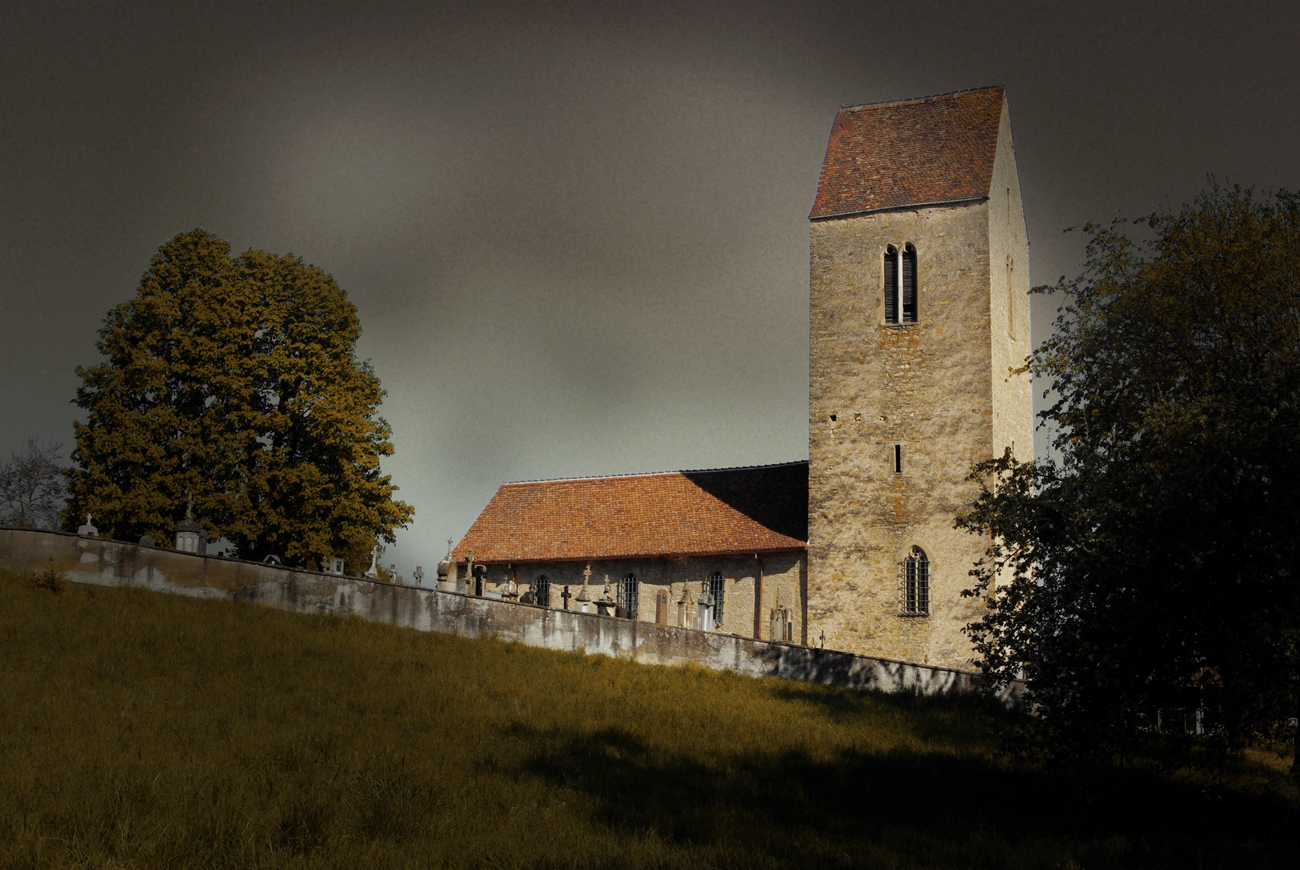
Until recently, the priests celebrating mass would feel the altar cloth to make sure that the little book was not hidden there.
The original purpose of the Spiritual Shield was to protect its owner from the evil and misery that plagued the countryside: dangers, diseases, plagues, fires, destructive weather… It had to guarantee the physical or mental integrity of its holder, to preserve the family as well as the material goods of the household.
A book of witchcraft
Supposed to fight against witchcraft and bad spells, the Geistliche Schild gradually took on a completely different function in the eyes of the population. They turned it into a book of witchcraft. A secret book that one had to keep with him at all times. Never show it to anyone or tell anyone about it.
If the owner did not use it, the power of the book would turn against him. The popular belief added that it was necessary for the owner to pass it on to his heir before he died. This was to spare him a particularly long agony!
The Church counter-attacks!

As you can imagine, these beliefs and superstitions, which were alive and well in the Sundgau, were not in the odour of sanctity for the Church. The priests tried to fight against them. They had a lot to do. Because in the countryside, people believed in witchcraft, bewitchments, curses and other spells.
One of your cows is sick? It is surely a blow of the neighbour who threw you a fate… The crops are lost because of a violent storm? But who could have planned this plague?
Direct consequence: the mistrust of the inhabitants between them. In some villages, I was told, people were “looking at each other like dogs“. Nice atmosphere!
Fortunately, all that is in the past. Or almost.
Visit the Sundgau
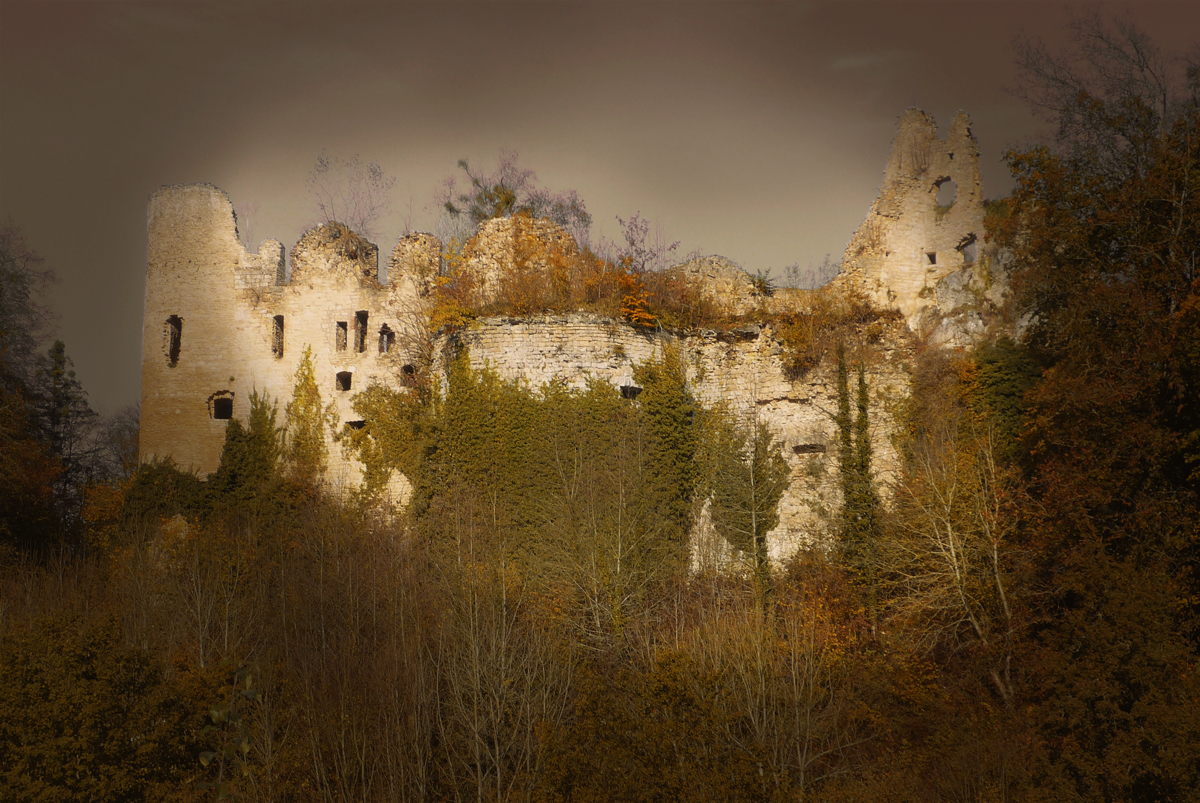
The Sundgau is a territory made up of wooded valleys crossed by pretty winding roads linking charming villages with half-timbered houses that are lovingly maintained.
The countryside is punctuated with flowered chapels, orchards alternating with vast meadows, and mysterious forests dotted with a multitude of fishy ponds… A region full of relief often forgotten by tourists in Alsace!
To discover on the blog:
- the Sundgau, a picturesque country in the south of Alsace
- the Enchanted Forest of Altkirch… although opened during the Christmas season, its tales and legends are reminiscent of Halloween in Alsace!
The website of the Tourist Office to know more about the Sundgau:
Book your accommodation in the Sundgau!
- Click here for a selection of hotels, B&B and guest houses in the Sundgau region.
4. Bergheim and its forty-three witches
Forty-three witches? That’s a lot of evil women in the village!
- Do you have in mind ugly old toothless ladies dressed in black and flying on a broom?
- Sordid and mischievous characters, ready to do anything to cast a spell on the poor souls that we are?
- Evil potion makers, who brood over their revenge inside a sinister mansion full of spider webs?
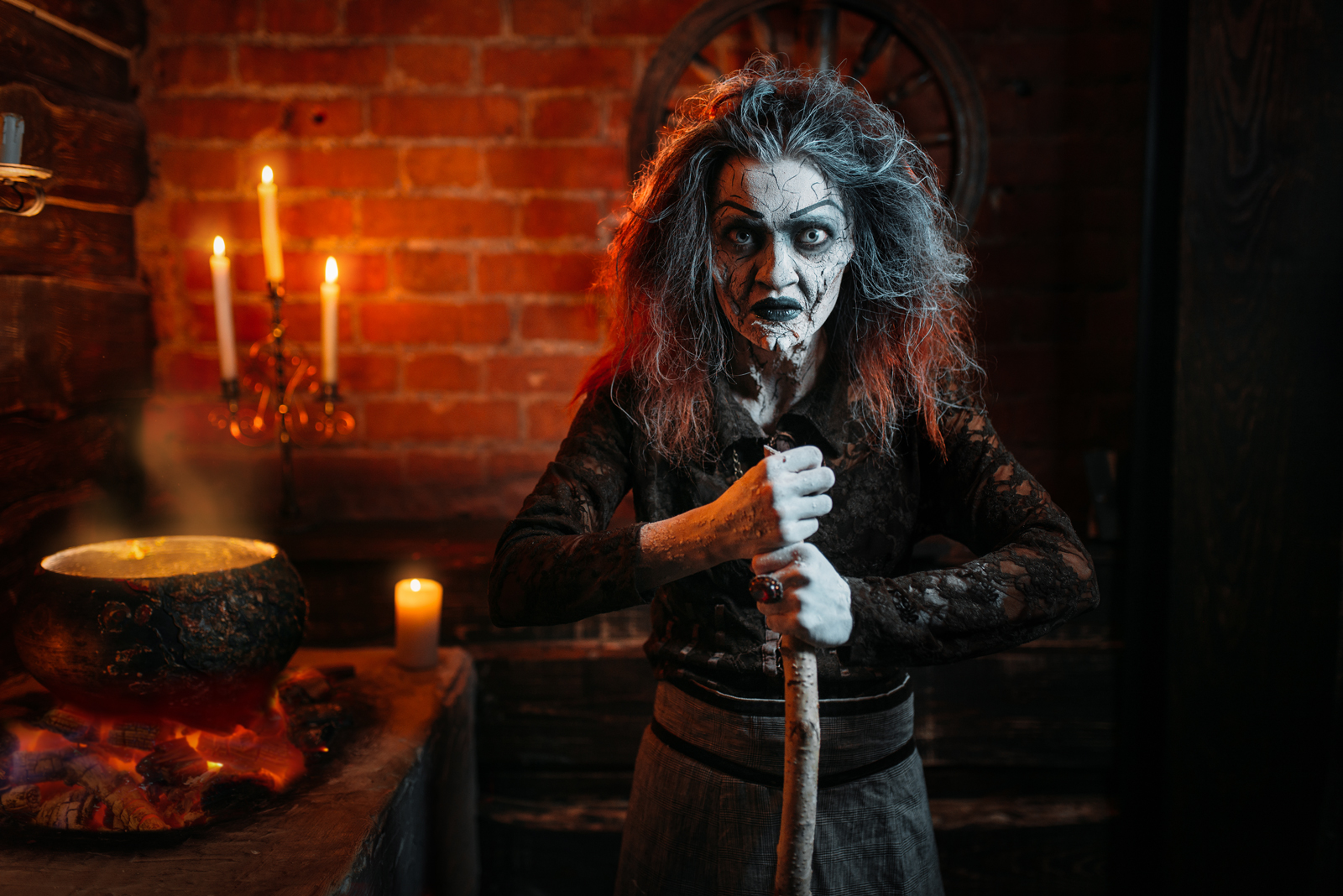
Well, I’ll tell you right now: erase those old clichés from your memory.
Because the witches of Bergheim, accused of having sold their soul and their body to the Devil… were not witches at all.
And that’s the whole tragedy.
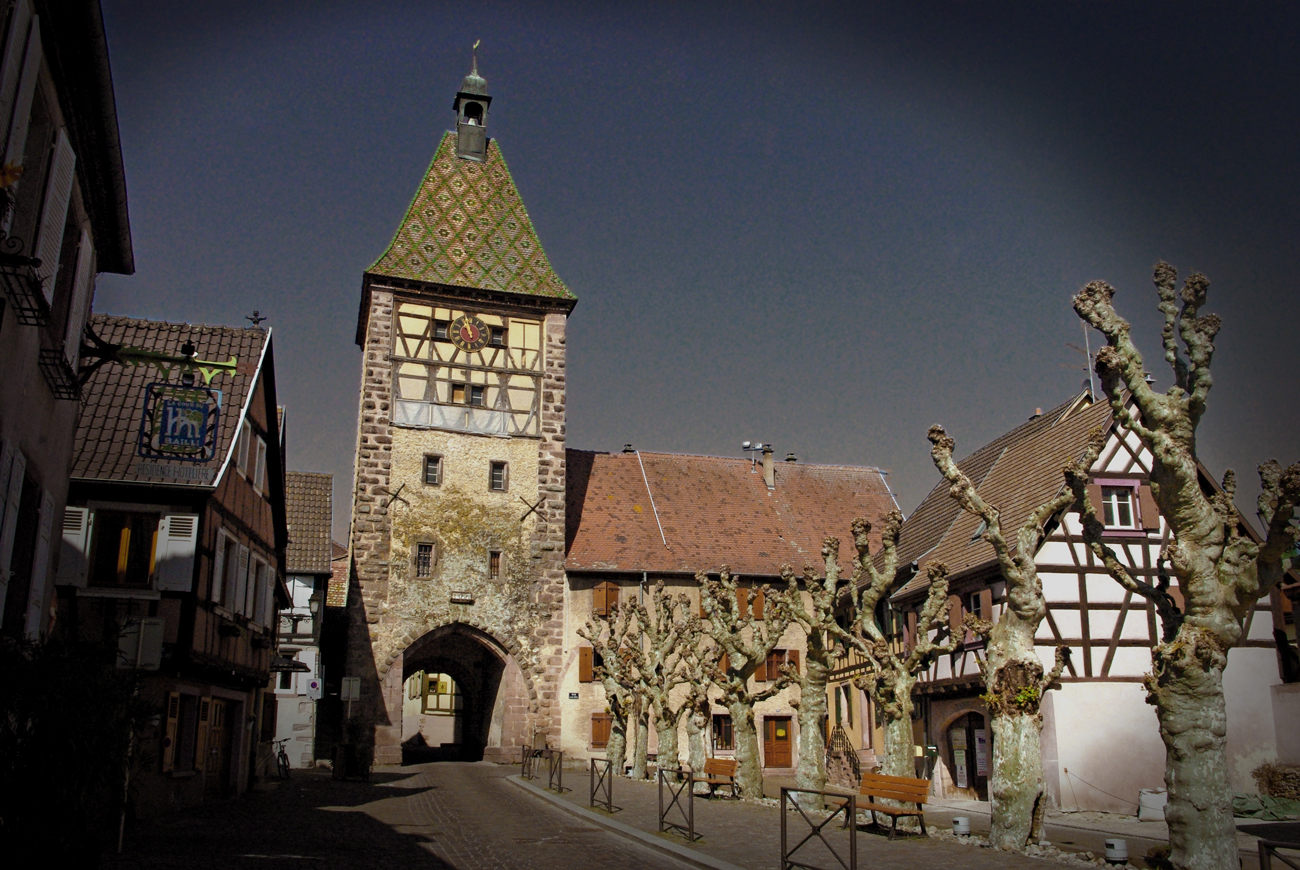
For a long time, Alsatians knew little or nothing about what really happened in Bergheim and in other places in the region. Since the 1990s, historians, amateurs or professionals, have been trying to unearth the secrets of this painful part of local history. Thousands of hours have been spent deciphering centuries-old archives written in Gothic German.
The research brought to light the details of despicable witchcraft trials.
Unfair trials in the middle of the Renaissance
Under the accusation of imaginary facts or cowardly denunciations, innocent women of all ages were sent to the stake after atrocious tortures.
Listen to the story of Catherine Bassler, the priest’s maid in Bergheim. In 1586, her godmother forced her to marry a drunken and violent carpenter. She took courage and ran away from the house. Fatal mistake! The denunciation earned her the accusation of murdering farm animals (calves, hens). And, even more seriously, of having murdered her uncle on the orders of a “man in a black cape”. Faced with these serious accusations, Catherine Bassler was charged with acts of witchcraft. But the judge granted her some leniency. He ordered her beheading and then threw her body into the flames.
There are 42 other such stories… because 43 people died in Bergheim, burned, hanged or tortured.
It didn’t take much to be accused of witchcraft…
So, in those days, it didn’t take much to be accused of witchcraft.
A rumour. A denunciation. A fact of chance. A pretext. An argument with a neighbour. A birthmark or a misplaced mole. Even a habit of walking outside at night.
The interrogation is rather in conformity with the idea that one has of torture in the Middle Ages: red iron, “chair of insomnia” entirely covered with spikes, Spanish Brodequin which crushes the foot by means of a screw, estrapade disarticulating the tortured by suspending him by his wrists bound in the back…
The tortured one, if he is not already oxy, has no other choice than to confess. To hope for the end of this terrible ordeal.
A heavy political context
The witchcraft trials tried in Bergheim took place between 1582 and 1683. That is to say, during a period in which Alsace experienced profound political upheavals. The Thirty Years’ War (1618-1648) ended with the acquisition of the region by France. A period strongly marked by war, misery, famine, economic crisis, diseases…
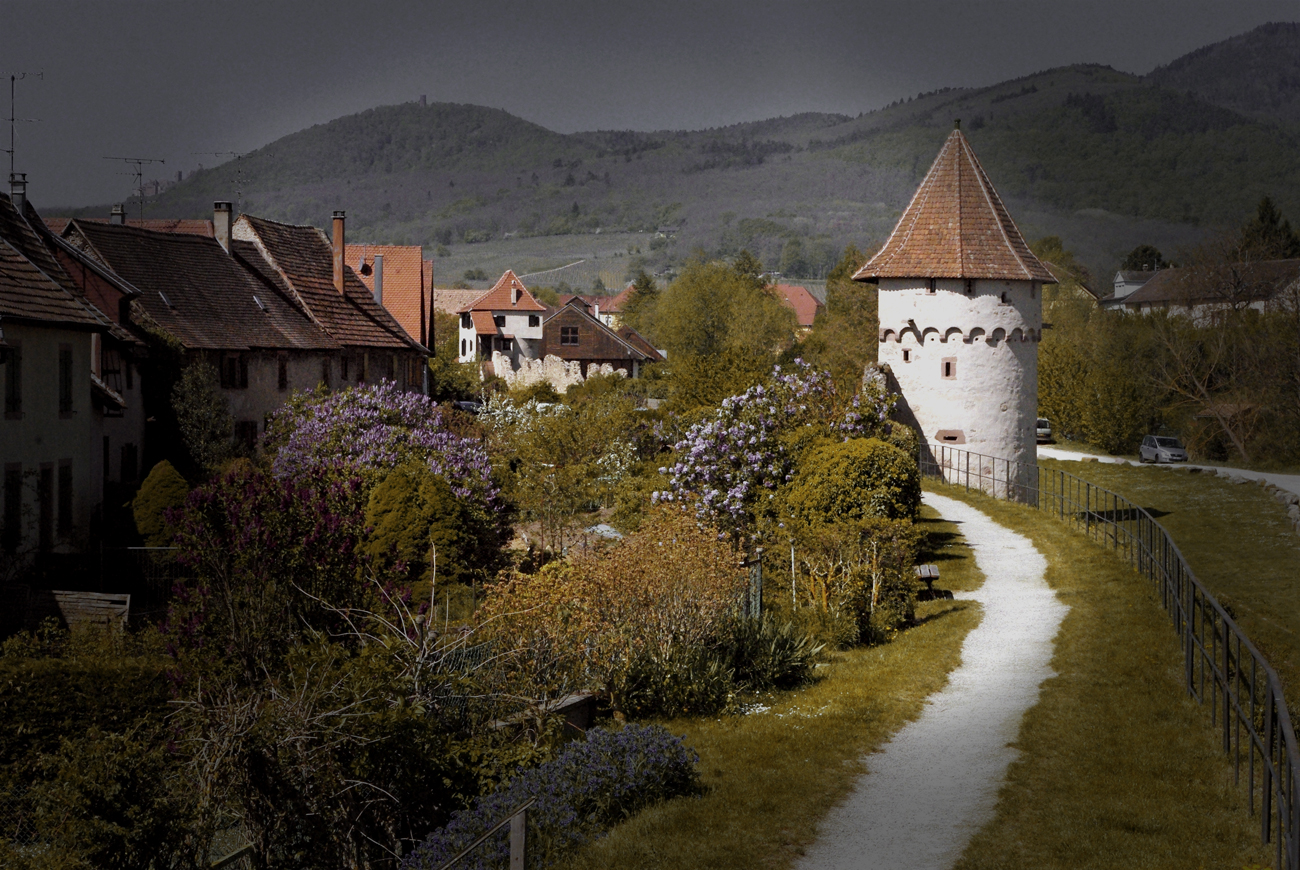
The article published in L’Express in 2002 gives a realistic and poignant vision of what was the terrible condition of these poor innocent women.
The Witches’ House located on the church square is dedicated to the local girls who were condemned to death by public rumour. On two floors, you will discover pictures, engravings, films, archives and short texts in French and German. This could well be a high spot of Halloween in Alsace.
Visit Bergheim and the Ribeauvillé-Riquewihr area
At the bend in the road of the Alsace wines, the fortified village of Bergheim appears. It is one of the rare Alsatian cities to have kept its medieval enclosure in good condition.
The double enclosure of Bergheim dates from 1311. The ramparts surround the village according to a rectangular plan of 600 m by 300 m.
The old town is crossed by the Grand-Rue, lined with beautiful half-timbered houses.
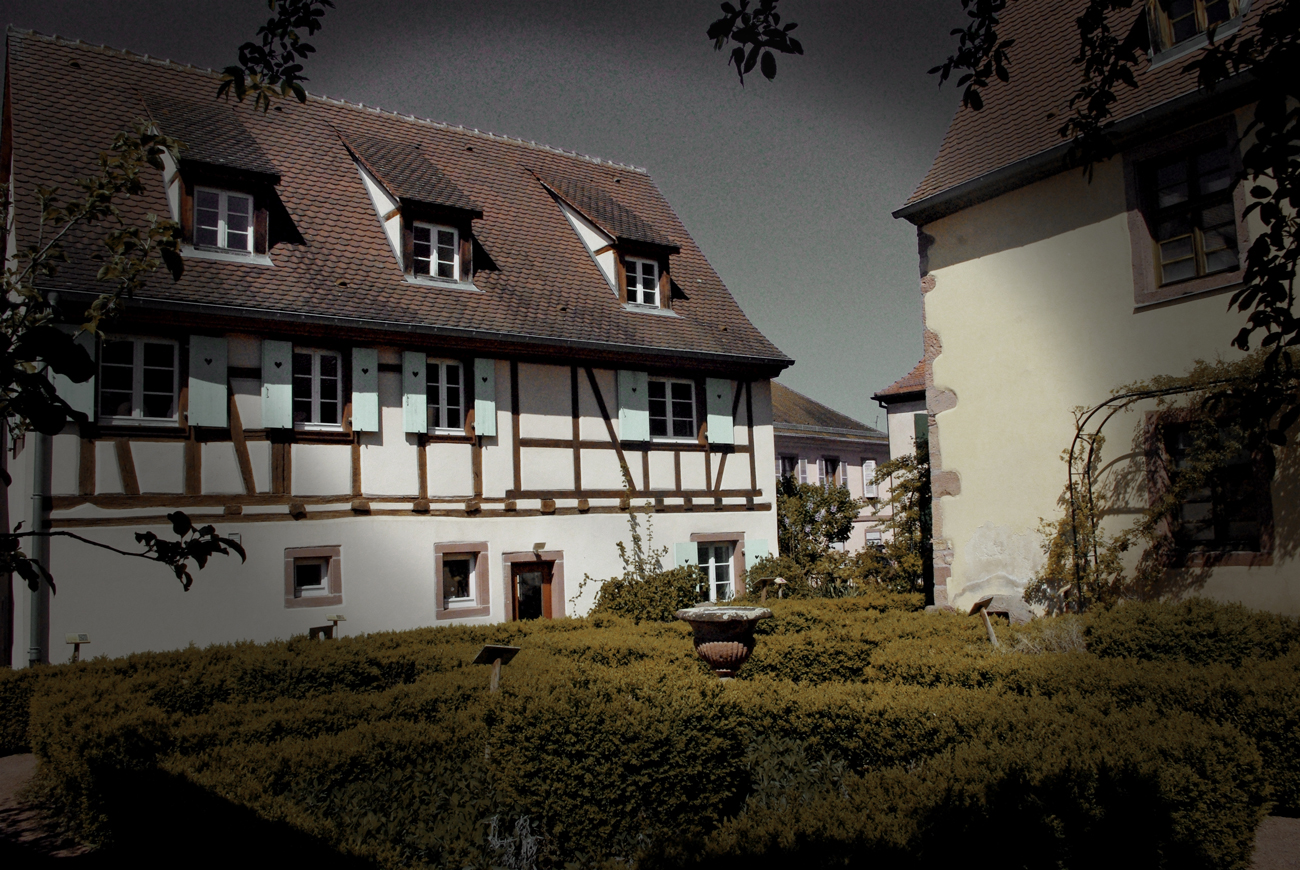
To discover on the blog:
- Stroll around the ramparts of Bergheim
- Find out more about the scenic Alsace Wine Route
The website of the Tourist Office to know more about Bergheim:
Book your accommodation in Bergheim!
- Click here for a selection of hotels, B&B and guest houses in Bergheim.
5. Hans Trapp, the terror of Wissembourg!
Riding his black horse, he roams the icy countryside of Wissembourg with a bang.
Dressed in a big black coat, he is wearing big black boots that make a lot of noise while walking.
He holds a stick in his hand, ready to strike.
Here comes Hans Trapp, the terror of Wissembourg.
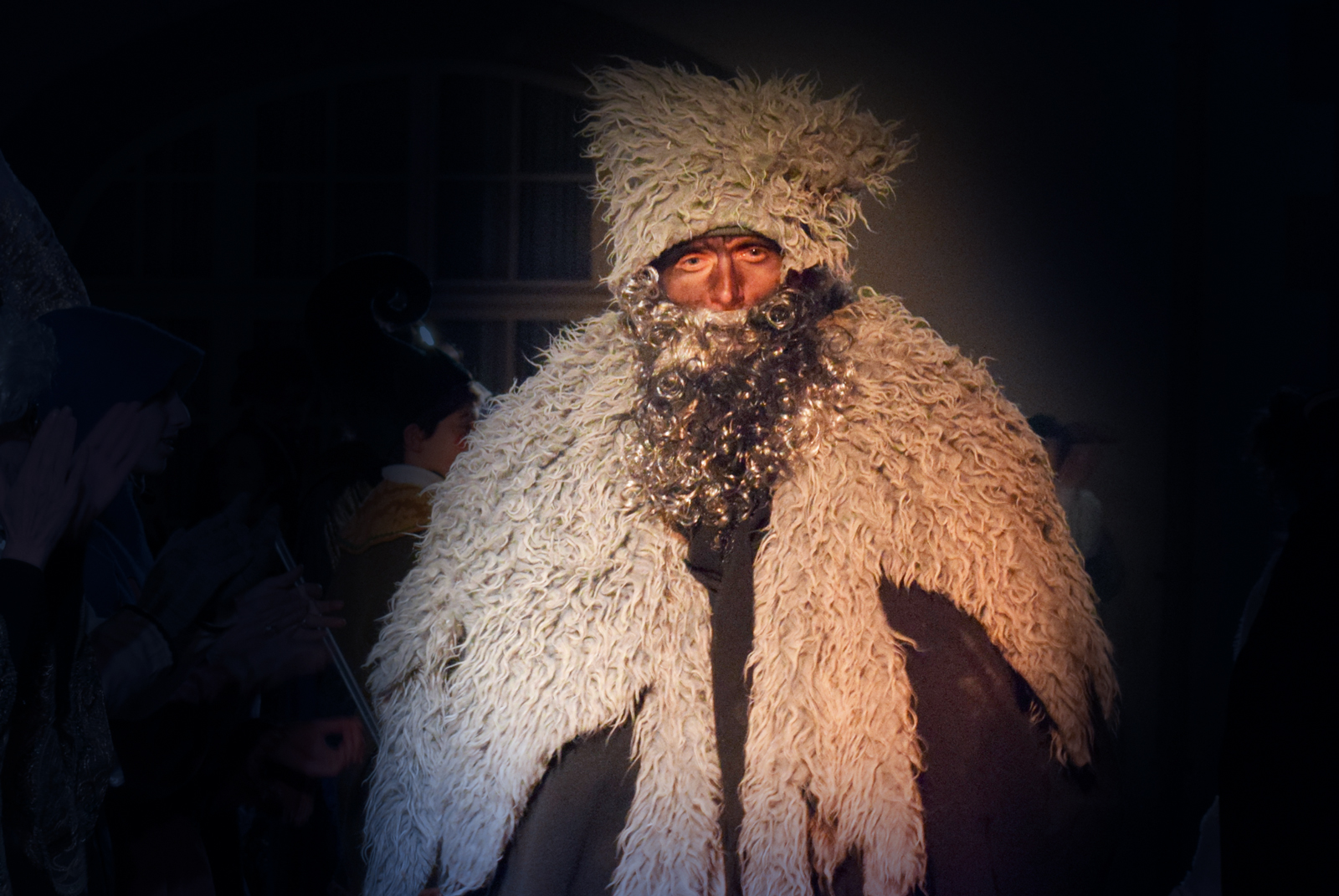
At the mention of this hateful, dark and associative character, the children hide under the sheets of their bed.
And there’s a good reason. Hans Trapp is more terrifying than any villain from a Walt Disney movie! A bogeyman who haunts the worst nightmares of Alsatian children.
But how could we create such a detestable character?
The knight Hans von Trotha
![Berwartstein Castle © Ulli1105 - license [CC BY-SA 3.0] from Wikimedia Commons](https://frenchmoments.eu/wp-content/uploads/2021/10/Berwartstein-Halloween-LR-©-Ulli1105-licence-CC-BY-SA-3.0-from-Wikimedia-Commons.jpg)
It is at the German Berwartstein Castle in the Palatinate, 15 km north of Wissembourg, that the story of Hans Trapp begins.
It is an austere-looking fortress that would have pleased Count Dracula. In 1480, the castle was awarded to a certain Hans von Trotha (or John of Dratt) by the Elector of the Palatinate.
Hans was a distinguished knight, born around 1450 in Krosigk (today in Saxony-Anhalt). He was favoured by the Prince who elevated him a few years later to the prestigious rank of Marshal of the Prince-Electors of the Palatinate.
However, the Prince was not unaware that the castle of Berwartstein and its dependencies had been in the possession of the abbot of Wissembourg. By entrusting them to a reckless knight, he hoped to reduce the influence of the abbey. A political calculation!
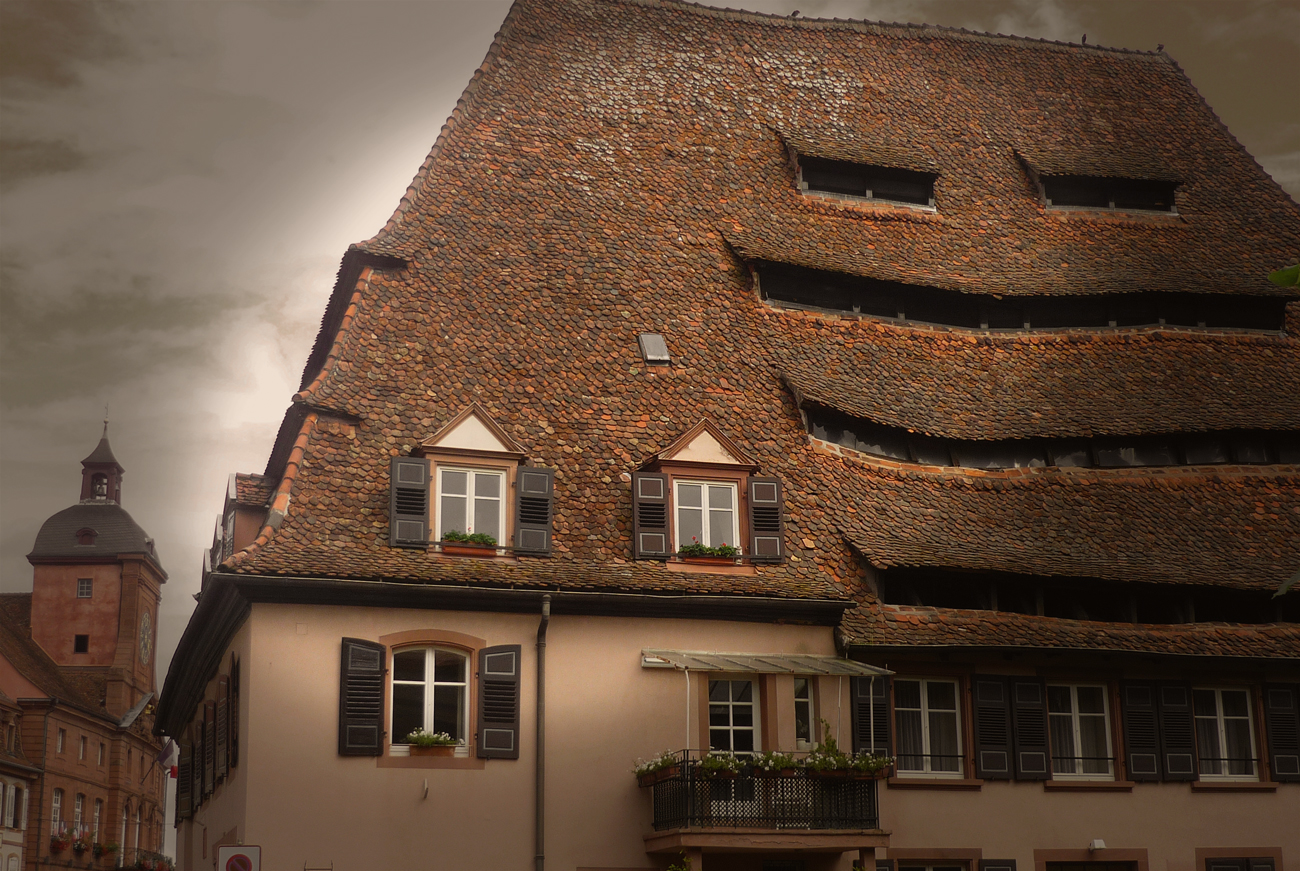
Of course, the abbot of Wissembourg, former owner of the place, did not fail to protest. He denounced the existence of irregularities in the acquisition of the Berwartstein. He appealed to the Elector in Heidelberg. The latter decided … in favour of Hans Von Trotha!
Hans von Trotha’s revenge
The monks must have given the knight so much trouble that he had the idea of retaliation. What was crucial for a city in the Middle Ages? Access to water.
Trotha built a dam on the waters of the Wieslauter, which flowed through the city of Wissembourg. The watercourse was diverted upstream from the city. An artificial lake was formed, flooding the abbot’s land.
The monks, furious and distraught, protested and demanded the return of the water to their city. The mischievous Trotha complied. He pierced the dam. The water flowed down the hill and severely flooded Wissembourg. This catastrophe caused serious economic damage to the city.
The Pope’s punishment
The abbot appealed several times to the Holy Roman Emperor. In vain.
There was only one solution left: to plead his case to the Pope. After eight years, he finally found favour in the eyes of Pope Alexander VI. Hans von Trotha was summoned to the papal court in Rome. He refused to go. He was content to write a letter proclaiming his loyalty to the Church… and took advantage of the occasion to launch a few barbs at the Pope accusing him of immorality (although he was not entirely wrong!). The response was scathing: Hans von Trotha was excommunicated, i.e. banished from society.
It would seem that Trotha did not care about this punishment. In fact, two years after his death, the punishment was lifted posthumously.
Hans von Trotha died on October 26, 1503 in his castle of Berwartstein. And the legend took over…
Hans Trapp, the legend of a terror
In the centuries following his death, local custom attributed to Hans von Trotha all the attributes of an evil character.
A bloodthirsty brute. A debauchee. A power-hungry man. A sorcerer. A child-eater. The best character for Halloween in Alsace!
In fact, a legend says that God himself punished him for having devoured a young shepherd by turning him into a scarecrow.
His name was deformed into Hans Trapp, trappen meaning to make noise while walking to chase away the spirits. This is why it is said of the dark character that he wanders at night without rest in the deep, dark forest of Berwartstein Castle.
Visit Wissembourg
Located in the north of Alsace, on the border with Germany, the historic city of Wissembourg is very picturesque.
Several buildings of interest make up the old town: the 18th century Town Hall, the Salt House and its remarkable roof (15th century) as well as several old houses of notables.
The Saint-Pierre-et-Saint-Paul abbey church dates from the 11th century. The church was redesigned several times, notably in the 13th century in the Gothic style.

Wissembourg also has its “Little Venice”. Cross the footbridge in the Schlupf district to see the reflection of the abbey church in the waters of the Lauter. A fine picture-postcard site.
To discover on the blog:
- Who is Hans Trapp? [on the French blog]
The website of the Tourist Office to know more about Wissembourg:
Book your accommodation in Wissembourg!
- Click here for a selection of hotels, B&B and guest houses in Wissembourg.
Find out more!
- Read this article in French on our blog Mon Grand-Est.
- Find out more about Halloween in France on the blog.
- Discover the beautiful region of Alsace.
Here is a book in French on the tales and legends of Alsace which may interest you (to order on amazon.fr):
Inspired by Halloween in Alsace?
Why not pin this illustration of Halloween in Alsace to Pinterest:
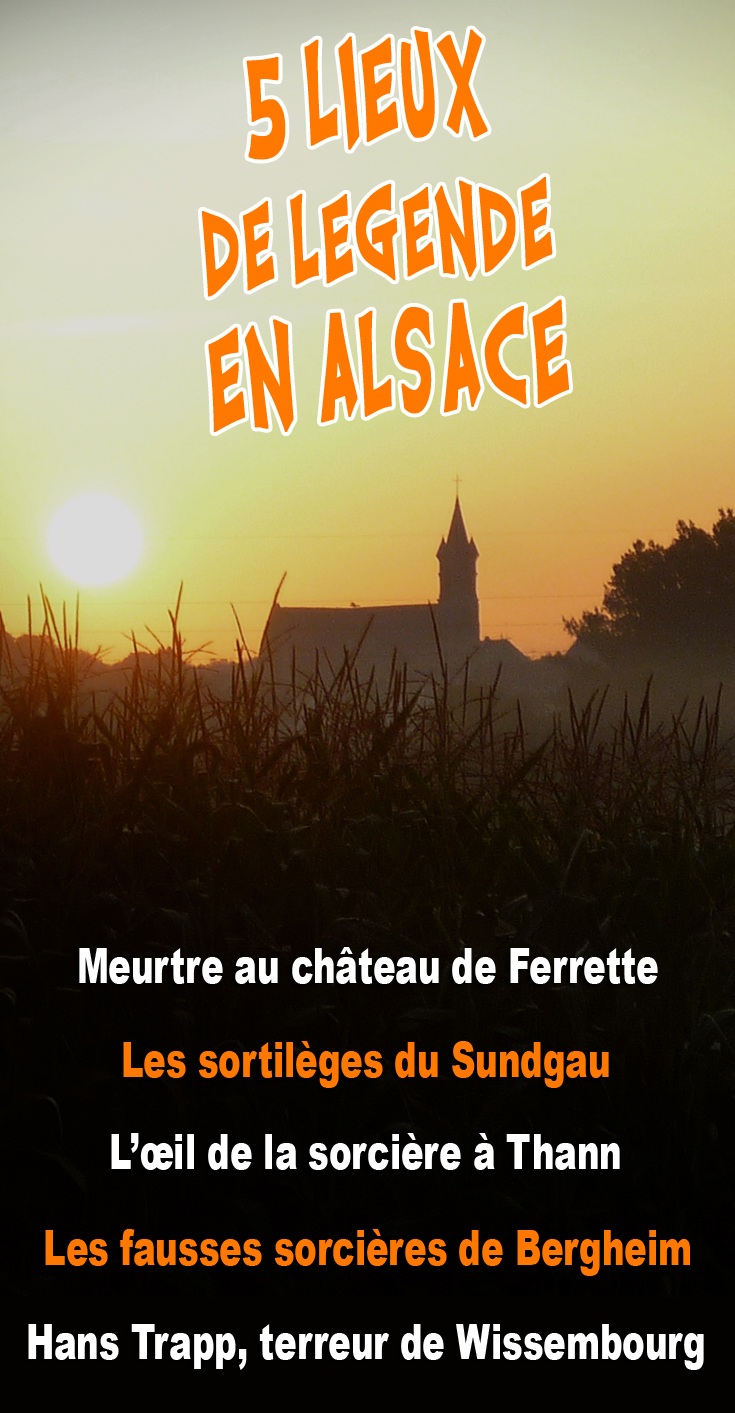
If you find that you like my articles or that you found them useful, don’t hesitate to share them on Twitter or Facebook. It would make me very happy, and it motivates me to keep on writing more! 🙂




